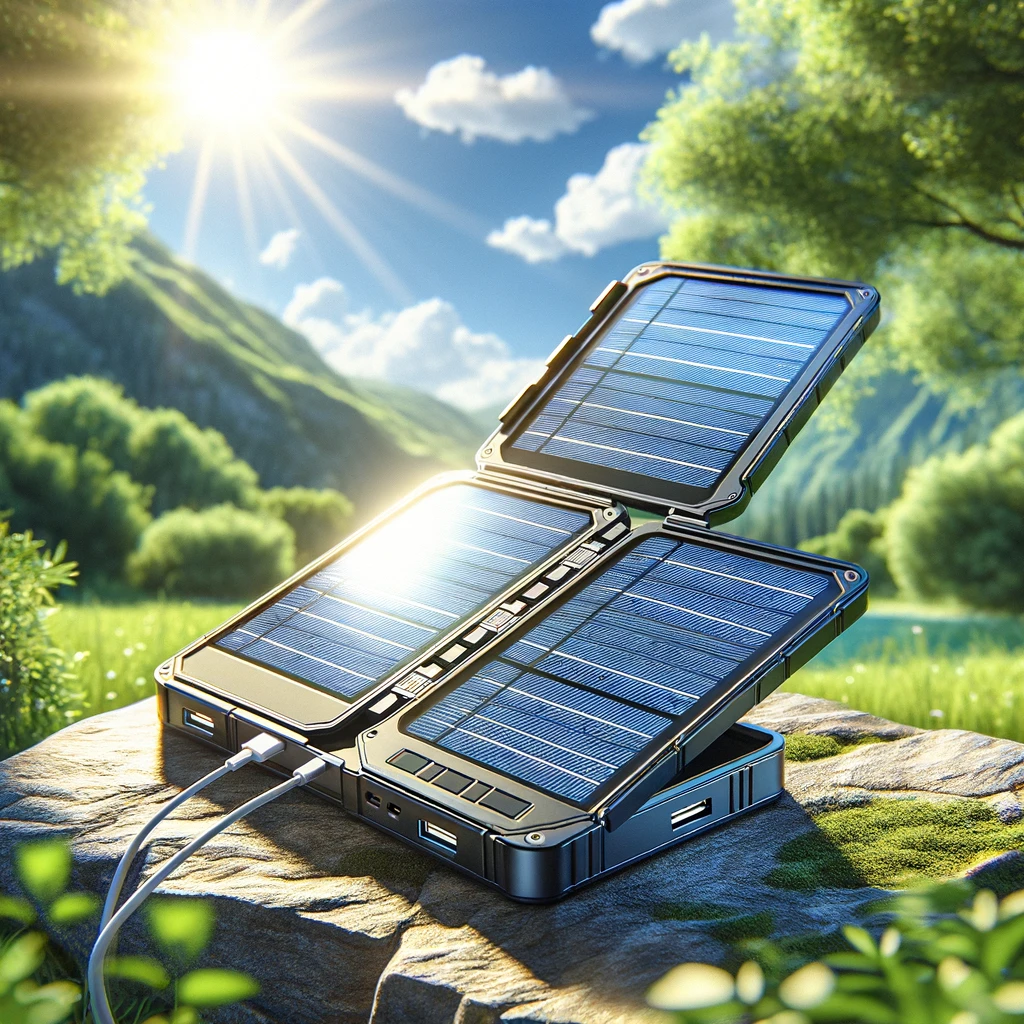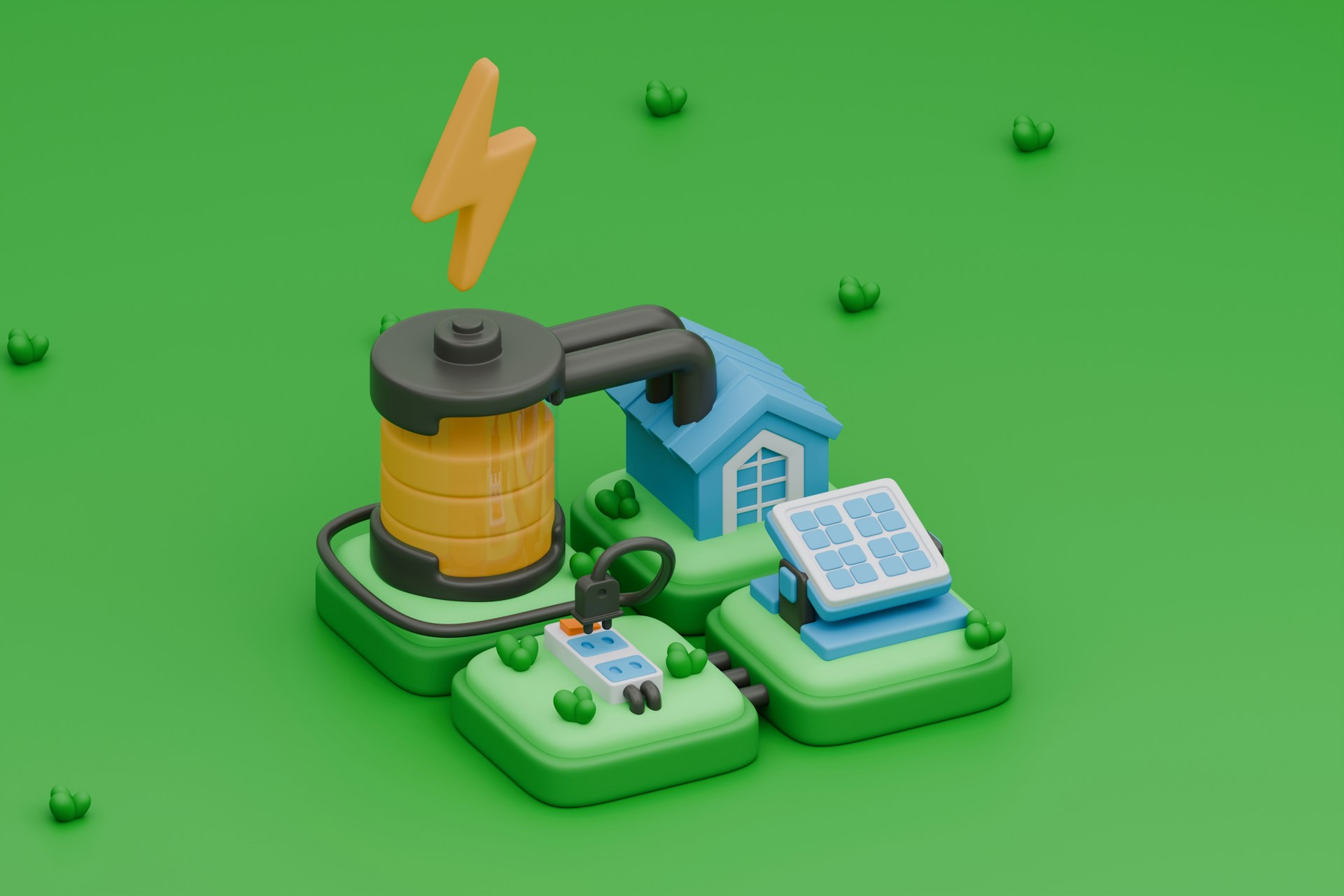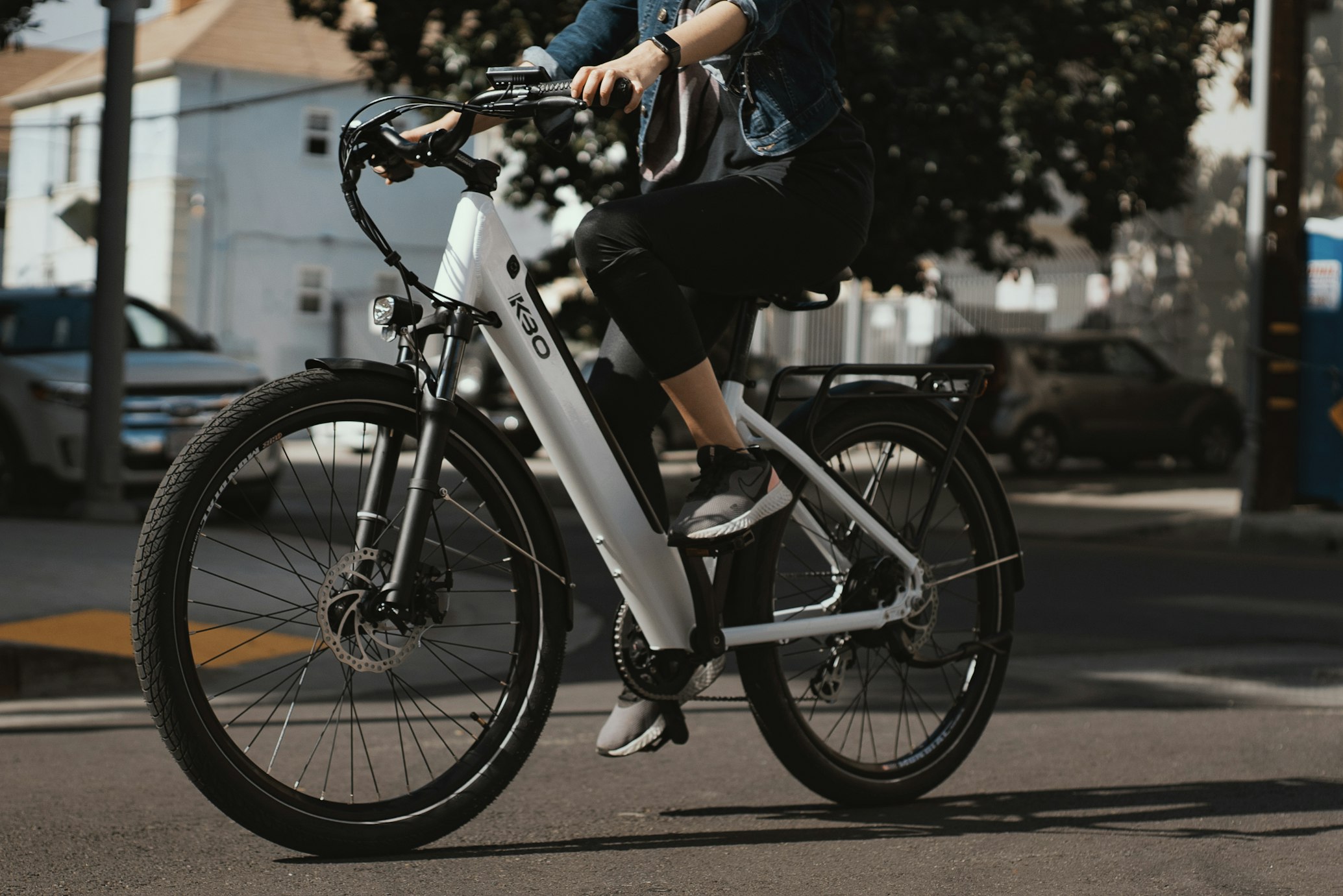Hey there, eco-warriors and tech enthusiasts! 🌱 Are you ready to dive into the exciting world of green gadgets? In today’s post, we’re going to explore how these innovative tools are playing a crucial role in combating climate change. So, grab your favorite eco-friendly beverage, and let’s get started!
What Are Green Gadgets?
First things first, let’s break down what we mean by “green gadgets.” Essentially, these are devices designed with the environment in mind. They aim to reduce energy consumption, lower carbon footprints, and promote sustainability. From solar-powered chargers to energy-efficient appliances, green gadgets come in all shapes and sizes.
Why Do We Need Them?
Climate change is one of the most pressing issues of our time. According to the Intergovernmental Panel on Climate Change (IPCC), human activities have significantly contributed to global warming, and if we don’t take action, the consequences could be devastating. Enter green gadgets – our tech-savvy allies in the fight against climate change.
Top Green Gadgets Making a Difference

1. Solar-Powered Chargers: Harnessing the Sun’s Energy for a Greener Tomorrow
Solar-powered chargers are a game-changer in the world of green gadgets. These nifty devices allow you to charge your electronics using the power of the sun, reducing your reliance on traditional electricity sources. Let’s delve deeper into the world of solar-powered chargers and explore why they’re a must-have for anyone looking to live a more sustainable lifestyle.
How Do Solar-Powered Chargers Work?
At their core, solar-powered chargers are quite simple. They use solar panels to capture sunlight and convert it into electricity. This electricity is then stored in a built-in battery or directly used to charge devices. Here’s a quick rundown of the process:
- Solar Panels: The charger is equipped with photovoltaic (PV) cells that capture sunlight.
- Conversion: The PV cells convert sunlight into direct current (DC) electricity.
- Storage: Some chargers store this electricity in a battery for later use.
- Charging: You can then use this stored electricity to charge your gadgets via USB ports or other connectors.
Benefits of Solar-Powered Chargers
- Eco-Friendly: By using the sun’s renewable energy, solar chargers help reduce our dependence on fossil fuels and lower our carbon footprint.
- Portability: Many solar chargers are lightweight and portable, making them perfect for outdoor activities like camping, hiking, and traveling.
- Cost Savings: Once you’ve purchased a solar charger, you can enjoy free energy from the sun, potentially lowering your electricity bills.
- Emergency Use: Solar chargers can be a lifesaver in emergencies or during power outages, ensuring you always have a way to keep your devices powered.
Types of Solar-Powered Chargers
There are several types of solar-powered chargers available, each suited to different needs:
- Portable Solar Chargers: These are small, lightweight, and often foldable, making them ideal for outdoor adventures.
- Solar Power Banks: These devices combine a solar panel with a battery, allowing you to store energy and use it later.
- Solar Backpacks: Integrated with solar panels, these backpacks can charge your devices while you’re on the go.
- Solar Phone Cases: These cases have built-in solar panels and can charge your phone directly.
Choosing the Right Solar-Powered Charger
When selecting a solar-powered charger, consider the following factors:
- Capacity: Determine how much power you need. Higher capacity chargers can power more devices or larger gadgets.
- Portability: If you need a charger for travel, look for compact, lightweight models.
- Durability: Ensure the charger is built to withstand outdoor conditions if you plan to use it for camping or hiking.
- Compatibility: Check that the charger is compatible with your devices. Most use USB ports, but some may have additional connectors.
Top Picks for Solar-Powered Chargers
Here are a few top-rated solar-powered chargers to consider:
- Goal Zero Nomad 7 Plus: A portable and durable option with a kickstand for optimal sun positioning.
- Anker PowerPort Solar: Known for its efficiency and foldable design, making it great for travelers.
- BigBlue 28W Solar Charger: Offers a high conversion rate and multiple USB ports, perfect for charging several devices simultaneously.
Making the Most of Your Solar-Powered Charger
To get the best performance from your solar-powered charger, follow these tips:
- Optimize Sun Exposure: Place the charger in direct sunlight and adjust the angle to maximize exposure.
- Keep it Clean: Regularly clean the solar panels to ensure they can capture sunlight efficiently.
- Monitor Usage: Be mindful of how much power you’re using and the charger’s capacity, especially on cloudy days when solar energy may be limited.
Solar-powered chargers are an excellent way to embrace renewable energy and reduce your environmental impact. Whether you’re an outdoor enthusiast or just looking to cut down on your electricity usage, these gadgets offer a convenient and sustainable solution. So why not take the plunge and invest in a solar-powered charger today? Your devices – and the planet – will thank you.

2. Energy-Efficient Appliances: Powering a Sustainable Future
Energy-efficient appliances are essential players in the movement towards sustainability. By consuming less energy and water, these devices help reduce our carbon footprints, save money, and make our homes more environmentally friendly. Let’s take a deeper dive into the world of energy-efficient appliances and explore how they can contribute to combating climate change.
What Are Energy-Efficient Appliances?
Energy-efficient appliances are designed to use less energy and water than their conventional counterparts while providing the same, if not better, performance. They achieve this through advanced technologies and innovative designs that minimize waste and maximize efficiency. Common examples include refrigerators, washing machines, dishwashers, air conditioners, and lighting.
The Importance of Energy Efficiency
Reducing energy consumption is crucial for several reasons:
- Lower Carbon Emissions: Using less energy means burning fewer fossil fuels, which reduces greenhouse gas emissions and helps mitigate climate change.
- Cost Savings: Energy-efficient appliances lower utility bills, saving money in the long run.
- Resource Conservation: These appliances often use less water and other resources, contributing to overall conservation efforts.
- Improved Performance: Many energy-efficient models offer superior performance, with features like faster cooling, better washing, and more consistent heating.
Key Features of Energy-Efficient Appliances
When shopping for energy-efficient appliances, look for the following features:
- ENERGY STAR Certification: The ENERGY STAR label signifies that the appliance meets strict energy efficiency guidelines set by the U.S. Environmental Protection Agency (EPA). Products with this label are typically 10-50% more efficient than non-certified models.
- Smart Technology: Many energy-efficient appliances come equipped with smart technology, allowing you to control and monitor them remotely via smartphone apps. This helps optimize usage and reduce waste.
- Advanced Insulation: Improved insulation in refrigerators and ovens helps maintain temperatures more effectively, reducing the need for constant energy use.
- Efficient Motors and Compressors: Modern motors and compressors are designed to use less electricity while delivering the same level of performance.
- Water-Saving Features: Washing machines and dishwashers often have eco-friendly modes that use less water without compromising on cleanliness.
Popular Energy-Efficient Appliances
Let’s take a closer look at some common energy-efficient appliances and their benefits:
- Refrigerators: Energy-efficient refrigerators use advanced insulation and compressors to keep food fresh while using less electricity. Models with the ENERGY STAR label can save you more than $300 over five years.
- Washing Machines: These machines use less water and energy per load. Front-loading models are particularly efficient, as they use gravity to tumble clothes, requiring less water.
- Dishwashers: Modern dishwashers with energy-efficient features use sensors to determine the amount of water and energy needed for each load, ensuring optimal performance with minimal waste.
- Air Conditioners: Energy-efficient air conditioners use less electricity to cool your home. Look for units with programmable thermostats and energy-saving modes.
- Lighting: LED bulbs are the gold standard for energy-efficient lighting, using up to 80% less energy than traditional incandescent bulbs and lasting up to 25 times longer.
How to Choose Energy-Efficient Appliances
Selecting the right energy-efficient appliances for your home involves several considerations:
- Energy Use: Check the appliance’s energy rating and estimated yearly energy consumption. The lower the number, the more efficient the appliance.
- Size and Capacity: Ensure the appliance’s size and capacity meet your household’s needs. An oversized appliance can waste energy, while an undersized one may not perform efficiently.
- Features: Look for features that enhance efficiency, such as programmable settings, energy-saving modes, and smart technology.
- Rebates and Incentives: Many utility companies and government programs offer rebates and incentives for purchasing energy-efficient appliances. Check for available programs in your area.
Making the Switch: Tips for Transitioning to Energy-Efficient Appliances
Transitioning to energy-efficient appliances can be straightforward with these tips:
- Upgrade Gradually: Replace old appliances with energy-efficient models as they wear out. Prioritize high-usage items like refrigerators and air conditioners.
- Do Your Research: Read reviews and compare different models to find the most efficient and reliable options.
- Consider the Long-Term Savings: While energy-efficient appliances may have a higher upfront cost, they typically pay for themselves through energy savings over time.
- Proper Maintenance: Keep your appliances well-maintained to ensure they operate at peak efficiency. Clean filters, check seals, and follow manufacturer guidelines for optimal performance.
Energy-efficient appliances are a cornerstone of sustainable living. By reducing energy and water consumption, they help lower our environmental impact, save money, and improve the quality of our daily lives. Embracing these appliances is a significant step towards a greener future. So next time you’re in the market for a new appliance, consider going green – your wallet and the planet will thank you.
3. Smart Thermostats: The Future of Home Energy Management
Smart thermostats are revolutionizing the way we control and manage home heating and cooling. By learning your schedule, preferences, and adjusting the temperature accordingly, these innovative devices offer significant energy savings and enhanced comfort. Let’s delve deeper into the world of smart thermostats and explore how they contribute to a more sustainable and energy-efficient lifestyle.
What Are Smart Thermostats?
Smart thermostats are advanced devices that go beyond the capabilities of traditional programmable thermostats. They connect to your home’s Wi-Fi network, allowing you to control your heating and cooling systems remotely through a smartphone app or web interface. Some smart thermostats also learn your habits over time and automatically adjust settings to optimize comfort and efficiency.
How Do Smart Thermostats Work?
Smart thermostats use a combination of sensors, algorithms, and connectivity to manage your home’s temperature. Here’s a closer look at their functionality:
- Learning Capabilities: Many smart thermostats can learn your daily routines and preferences. For example, they might notice that you leave for work at 8 AM and return at 6 PM, adjusting the temperature accordingly to save energy while you’re away.
- Remote Control: With a smartphone app, you can adjust your thermostat from anywhere. This is especially useful if you forget to turn down the heat before leaving home or want to warm up the house before you return.
- Energy Reports: Smart thermostats often provide detailed energy usage reports, helping you understand how much energy you’re using and where you can make improvements.
- Integration with Other Smart Devices: These thermostats can often integrate with other smart home devices like smart lights, security systems, and even voice assistants like Amazon Alexa or Google Assistant.
Benefits of Smart Thermostats
- Energy Savings: By optimizing heating and cooling schedules, smart thermostats can significantly reduce energy consumption. The U.S. Department of Energy estimates that you can save up to 10% a year on heating and cooling by using a smart thermostat.
- Enhanced Comfort: Smart thermostats ensure your home is at the perfect temperature when you need it, providing greater comfort and convenience.
- Remote Access: Control your thermostat from anywhere, whether you’re at work, on vacation, or just lounging on the couch.
- Customizable Schedules: Easily set and adjust schedules to match your lifestyle, ensuring your home is always at the ideal temperature.
- Environmentally Friendly: Reducing energy usage lowers your carbon footprint, making smart thermostats an eco-friendly choice.
Popular Smart Thermostats
Here are a few top-rated smart thermostats to consider:
- Google Nest Learning Thermostat: Known for its sleek design and advanced learning capabilities, the Nest Learning Thermostat adapts to your schedule and preferences, optimizing energy use for maximum efficiency.
- ecobee SmartThermostat with Voice Control: Featuring built-in Alexa voice control, the ecobee SmartThermostat offers robust smart home integration and includes remote sensors to ensure even temperature control throughout your home.
- Honeywell Home T9 Smart Thermostat: With smart room sensors and geofencing capabilities, the Honeywell T9 can adjust the temperature based on your location, ensuring comfort when you’re home and savings when you’re away.
How to Install and Set Up a Smart Thermostat
Installing a smart thermostat is generally straightforward, but it’s important to follow the manufacturer’s instructions carefully. Here’s a basic outline of the process:
- Turn Off Power: Switch off the power to your HVAC system to ensure safety during installation.
- Remove Old Thermostat: Carefully remove your old thermostat, taking note of how the wires are connected. It’s a good idea to label the wires for reference.
- Install the Base Plate: Attach the base plate of your new smart thermostat to the wall, using the provided screws and anchors.
- Connect Wires: Connect the wires to the appropriate terminals on the new thermostat, following the labels and the manufacturer’s instructions.
- Attach the Thermostat: Snap the new thermostat onto the base plate.
- Power On: Turn the power back on and follow the on-screen setup instructions to connect the thermostat to your Wi-Fi network and customize your settings.
Making the Most of Your Smart Thermostat
To get the most out of your smart thermostat, consider the following tips:
- Utilize Learning Features: Allow the thermostat to learn your habits and adjust the temperature accordingly. This can take a few weeks but will lead to optimized energy savings.
- Set Schedules: If your thermostat doesn’t have learning capabilities, set schedules manually to match your daily routine.
- Enable Geofencing: Use geofencing features to automatically adjust the temperature when you leave or approach your home.
- Monitor Energy Reports: Regularly review the energy reports provided by your thermostat to identify patterns and areas for improvement.
- Integrate with Other Smart Devices: Enhance your smart home ecosystem by integrating your thermostat with other devices, such as smart lights or voice assistants.
Conclusion
Smart thermostats are a smart investment for anyone looking to reduce energy consumption, save money, and enjoy greater control over their home’s climate. By learning your preferences, providing remote access, and offering detailed energy insights, these devices make it easy to maintain a comfortable and energy-efficient home. So, if you haven’t already, consider upgrading to a smart thermostat and join the movement towards a more sustainable future.
4. Electric Bikes and Scooters: Eco-Friendly Transportation for the Modern World
Electric bikes and scooters are transforming urban mobility by providing a green, efficient, and fun alternative to traditional transportation methods. These eco-friendly vehicles not only help reduce traffic congestion and air pollution but also offer a cost-effective and convenient way to get around town. Let’s dive deeper into the world of electric bikes and scooters and see how they contribute to a more sustainable lifestyle.
What Are Electric Bikes and Scooters?
Electric bikes (e-bikes) and electric scooters (e-scooters) are battery-powered vehicles designed for personal transportation. They combine the best aspects of traditional bikes and scooters with electric motors, making it easier to travel longer distances without breaking a sweat.
- E-bikes: These are bicycles equipped with an electric motor that assists with pedaling. Depending on the model, the motor can be engaged by pedaling, a throttle, or both.
- E-scooters: These are stand-up scooters with an electric motor that propels the vehicle. Riders control the speed with a throttle and can brake using hand or foot brakes.
Benefits of Electric Bikes and Scooters
- Environmental Impact: E-bikes and e-scooters produce zero emissions, significantly reducing your carbon footprint compared to cars and motorcycles. By choosing electric transportation, you contribute to cleaner air and a healthier environment.
- Cost Savings: Operating an e-bike or e-scooter is much cheaper than driving a car. You’ll save on fuel, parking, maintenance, and insurance costs.
- Convenience: Electric bikes and scooters are perfect for short commutes, errands, and leisurely rides. They help you avoid traffic jams, and parking is a breeze.
- Health Benefits: Riding an e-bike still requires pedaling, providing a moderate form of exercise that can improve cardiovascular health and overall fitness.
- Reduced Traffic Congestion: By opting for electric bikes and scooters, you help decrease the number of cars on the road, reducing traffic congestion and the associated stress.
Types of Electric Bikes and Scooters
There are various types of e-bikes and e-scooters to suit different needs and preferences:
- City E-bikes: Designed for urban commuting, these bikes are comfortable, efficient, and often come with features like built-in lights, fenders, and racks for carrying cargo.
- Mountain E-bikes: Built for off-road adventures, these bikes have sturdy frames, robust suspension systems, and powerful motors to handle rough terrains.
- Folding E-bikes: Ideal for those with limited storage space, folding e-bikes are compact and easy to carry, making them perfect for commuters who use public transportation.
- E-scooters: Available in various designs, e-scooters can range from lightweight models for short trips to more robust versions with larger batteries and higher speeds for longer commutes.
Top Brands and Models
Here are a few top-rated electric bikes and scooters to consider:
- Rad Power Bikes RadCity: A versatile city e-bike with a powerful motor, long-range battery, and practical features like a rear rack and integrated lights.
- Trek Powerfly: A high-performance mountain e-bike designed for serious off-road enthusiasts, featuring advanced suspension and a powerful motor.
- Xiaomi Mi Electric Scooter: Known for its affordability and reliability, this e-scooter offers a great balance of speed, range, and portability.
- Segway Ninebot MAX: A durable and long-range e-scooter perfect for daily commuting, with a comfortable ride and smart features like a mobile app for tracking.
Choosing the Right Electric Bike or Scooter
When selecting an e-bike or e-scooter, consider the following factors:
- Range: Determine how far you need to travel on a single charge. Longer ranges are ideal for extended commutes or longer rides.
- Speed: Consider the top speed of the vehicle, especially if you’ll be riding on roads with other traffic.
- Battery Life: Look for models with high-quality batteries that offer longer life and shorter charging times.
- Weight and Portability: If you need to carry your e-bike or e-scooter, choose a lightweight and portable model.
- Comfort and Features: Ensure the vehicle is comfortable to ride and has the necessary features for your needs, such as lights, suspension, and storage options.
Safety Tips for Riding Electric Bikes and Scooters
Safety is paramount when riding e-bikes and e-scooters. Here are some tips to keep you safe on the road:
- Wear a Helmet: Always wear a helmet to protect yourself in case of accidents.
- Follow Traffic Laws: Obey all traffic signals, signs, and rules of the road. Ride in bike lanes where available.
- Be Visible: Use lights and reflectors, especially when riding at night or in low-visibility conditions.
- Stay Alert: Keep an eye out for pedestrians, other vehicles, and potential hazards. Avoid distractions like using your phone while riding.
- Maintain Your Vehicle: Regularly check your e-bike or e-scooter for any issues, such as tire pressure, brakes, and battery condition.
Electric bikes and scooters are leading the charge towards a more sustainable and efficient mode of transportation. By embracing these eco-friendly vehicles, you can reduce your environmental impact, save money, and enjoy a convenient and fun way to get around. Whether you’re commuting to work, running errands, or exploring your city, e-bikes and e-scooters offer a practical and green alternative to traditional transportation methods. So why not make the switch today and ride into a cleaner, greener future?
5. Reusable Smart Notebooks: Bridging Technology and Sustainability
Reusable smart notebooks are an innovative solution to the age-old problem of paper waste. By combining traditional handwriting with modern technology, these eco-friendly notebooks allow you to write, scan, erase, and reuse pages, significantly reducing your environmental footprint. Let’s dive deeper into the world of reusable smart notebooks and explore how they can help you stay organized while promoting sustainability.
What Are Reusable Smart Notebooks?
Reusable smart notebooks look and feel like regular notebooks but with a high-tech twist. They are designed with special pages that can be written on using erasable pens and then wiped clean, allowing you to reuse them multiple times. Additionally, these notebooks often come with companion apps that enable you to scan and store your notes digitally, making them accessible from any device.
How Do Reusable Smart Notebooks Work?
Here’s a step-by-step breakdown of how reusable smart notebooks function:
- Writing: Use a compatible erasable pen (like the Pilot FriXion pen) to write on the special pages of the notebook.
- Scanning: Once you’ve filled a page or completed your notes, use the companion app to scan the pages. These apps typically use your smartphone’s camera to capture high-quality images of your notes.
- Storing: The scanned notes can be saved and organized in various cloud storage services like Google Drive, Dropbox, Evernote, or directly within the app. This ensures your notes are always accessible and searchable.
- Erasing: After scanning, you can erase the pages using a damp cloth or the eraser on the pen, leaving the pages clean and ready for reuse.
Benefits of Reusable Smart Notebooks
- Eco-Friendly: By reusing the same pages multiple times, you significantly reduce paper consumption, helping to save trees and lower your environmental impact.
- Cost-Effective: Although the initial investment might be higher than traditional notebooks, reusable smart notebooks can be used indefinitely, saving you money in the long run.
- Organization: Digital storage of your notes makes it easier to organize, search, and access your information from anywhere.
- Convenience: No more carrying around multiple notebooks or worrying about running out of pages. A single reusable smart notebook can serve multiple purposes.
- Enhanced Productivity: The ability to quickly scan and store notes digitally helps streamline your workflow, making it easier to keep track of important information.
Popular Reusable Smart Notebooks
Here are some top-rated reusable smart notebooks to consider:
- Rocketbook Everlast: One of the most popular reusable smart notebooks, the Rocketbook Everlast features pages that can be wiped clean with a damp cloth and reused endlessly. It integrates seamlessly with various cloud services.
- Elfinbook: Similar to the Rocketbook, Elfinbook offers reusable pages that can be erased with water. It comes with a companion app for scanning and organizing your notes.
- Moleskine Smart Writing Set: This set includes a traditional-looking notebook and a smart pen that digitizes your handwriting in real-time, allowing you to save and organize your notes digitally.
How to Choose the Right Reusable Smart Notebook
When selecting a reusable smart notebook, consider the following factors:
- Page Type: Some notebooks offer a more traditional paper-like feel, while others have a smoother, more synthetic texture. Choose one that matches your writing preference.
- Size: Consider the notebook’s size based on your needs. Portable A5 sizes are great for on-the-go use, while larger A4 sizes offer more writing space.
- Compatibility: Ensure the notebook is compatible with the erasable pens you prefer. Most work with Pilot FriXion pens, but it’s always good to double-check.
- App Features: Look for companion apps that offer robust features like cloud integration, OCR (optical character recognition) for converting handwriting to text, and easy organization tools.
- Durability: Choose a notebook with durable construction that can withstand frequent use and erasing.
Tips for Using Reusable Smart Notebooks
To get the most out of your reusable smart notebook, follow these tips:
- Write Clearly: For best results when scanning, write neatly and avoid smudging.
- Scan Regularly: Regularly scan your notes to ensure you don’t lose any important information before erasing.
- Organize Digitally: Take advantage of the app’s organization features to categorize and tag your notes for easy retrieval.
- Care for Your Notebook: Clean the pages gently and store the notebook in a protective cover to prolong its lifespan.
- Explore Features: Experiment with the app’s features, like OCR and cloud integration, to enhance your productivity and note-taking experience.
Reusable smart notebooks are a brilliant fusion of traditional note-taking and modern technology, offering a sustainable and efficient way to capture and organize your thoughts. By reducing paper waste and providing the convenience of digital storage, these notebooks are an excellent choice for students, professionals, and anyone looking to live more sustainably. So why not make the switch to a reusable smart notebook and take a step towards a greener, more organized future?





